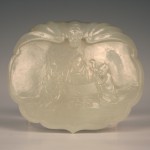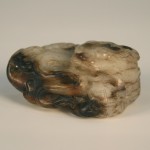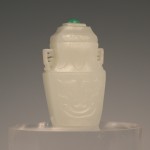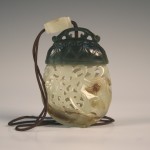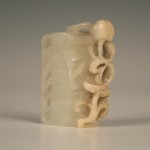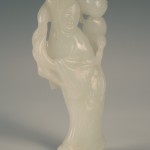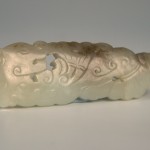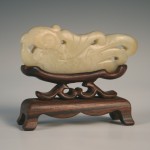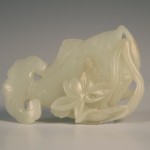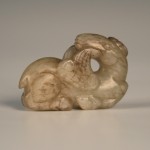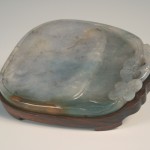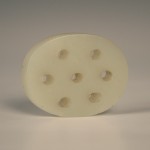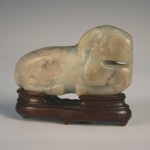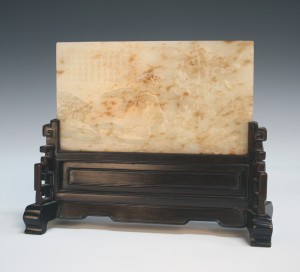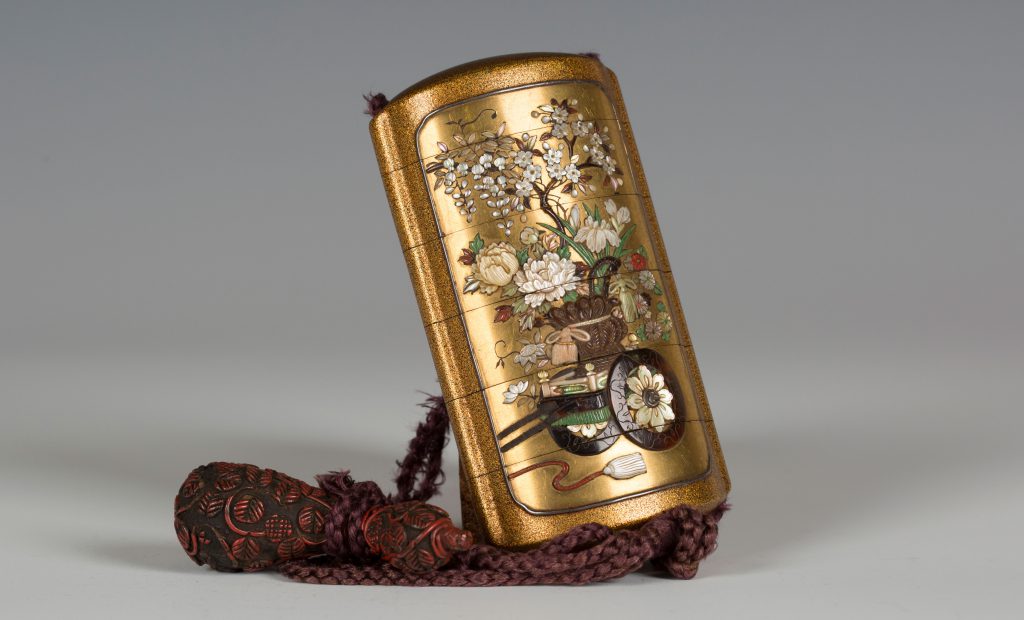
Japanese inro were originally designed as seal baskets but were mainly used to hold herbal medicines. The interlocking compartments were held together by a cord and would have been hung from a waist band. They were often finely decorated in lacquer and Shibayama.
For more than two hundred and fifty years Japan had lived in relative isolation from the outside world until American gunboat diplomacy, instigated by Commodore Perry in 1853, opened up Japan for trade with the West. Throughout the Edo (1603-1868) and Meiji (1868-1912) periods Japan’s rich tradition of arts and crafts gave voice to a civilized nation.
Amongst these arts and crafts lacquer work was used extensively in Japan. The technique came to Japan from China in the sixth century A.D. The art of the lacquer craftsman was highly technical but their patrons’ taste for traditional designs limited artistic creativity. The popularity of the inro emerged during the 17th and 18th centuries. These new objects allowed the lacquerers a greater freedom in design and decoration as well as the opportunity to experiment technically. Exquisite artistry was lavished on inro by artist-craftsmen working for the ruling classes. Favourite subjects included figures, gardens and floral displays.
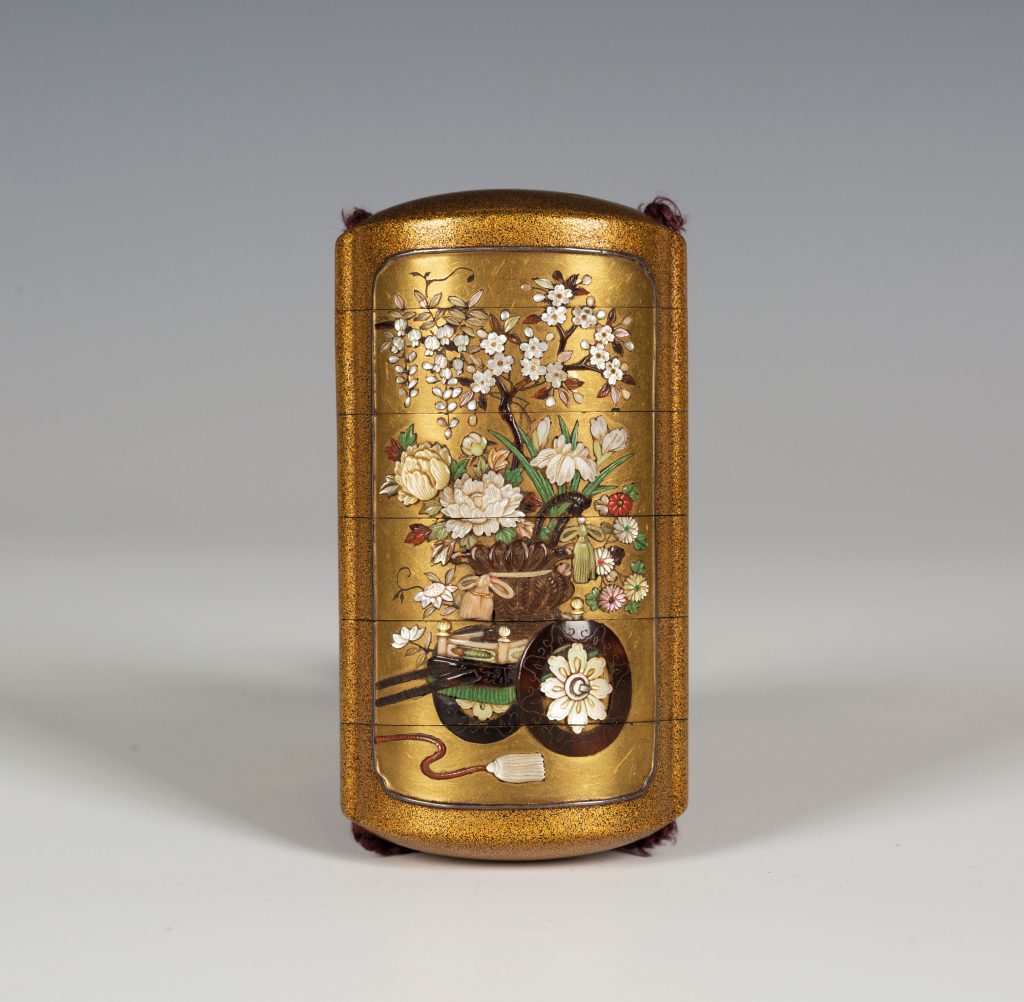
The Japanese lacquer and Shibayama inlaid five case inro illustrated here is a fine example of this artistic and technical tour de force. Measuring just 9.4cm the inro dates from the Meiji period (1868-1912) and combines the decorative techniques of maki-e with its powder gilt ground with Shibayama inlay. The high relief, finely inlaid image depicts a hanaguruma, a two-wheeled flower cart, carrying a tasselled wickerwork basket filled with chrysanthemum, peony, iris and a bough of flowering wisteria. The composition and colours of the scene depicted in carved tortoiseshell, coral, mother-of-pearl and hardstone are exquisitely conceived and worked.
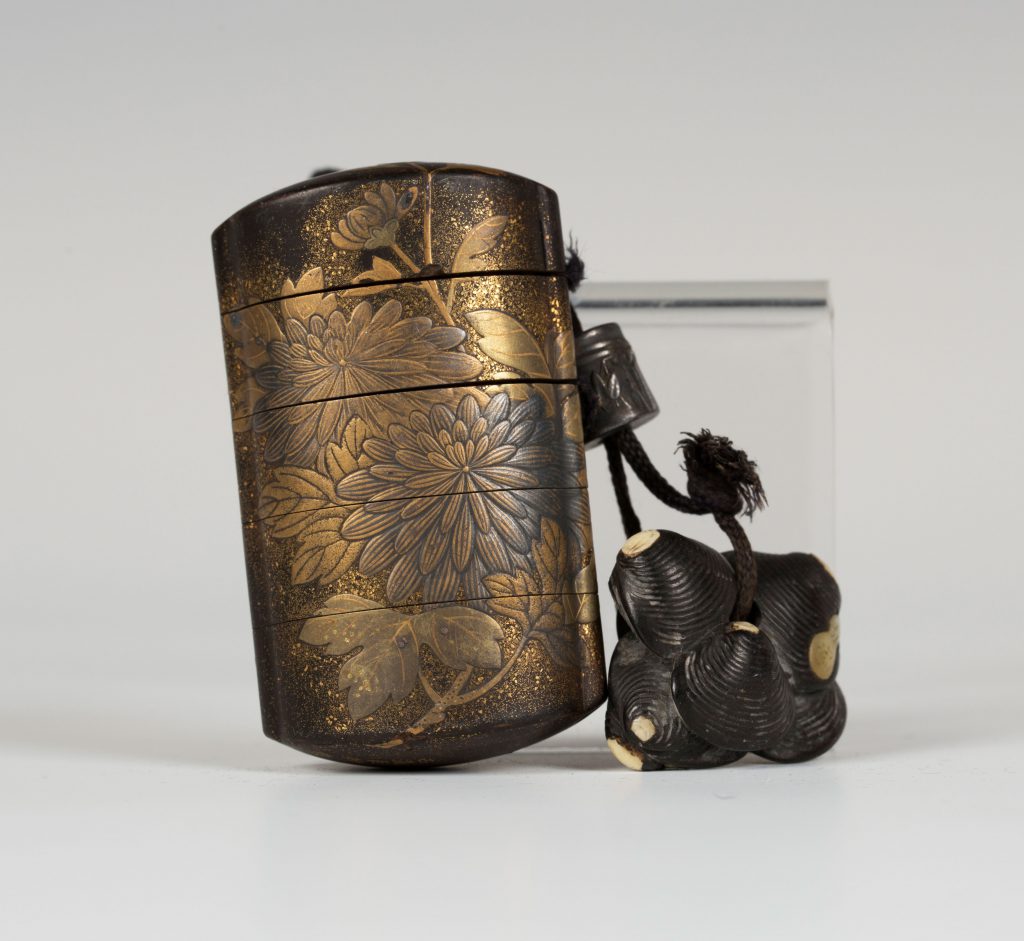
The Japanese four-case lacquer inro by Koma Koryu dates from the Edo period (19th century) and is differently decorated. The sides of its curved rectangular body are finely worked. Employing the hiramaki-e technique the gilt chrysanthemum are raised above the maki-e ground with its gilt speckled dark brown decoration. The hardwood netsuke is carved in the form of clam shells with ivory inlaid detail and the cord which unites the interlocking compartments can be clearly seen.
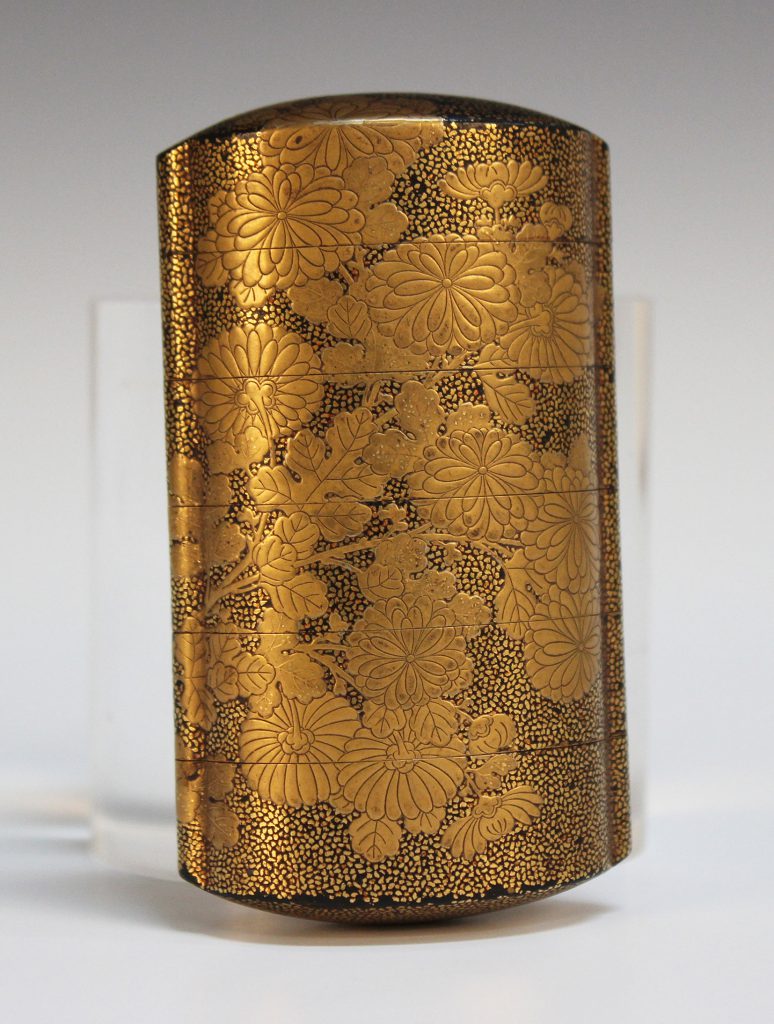
The final Japanese inro illustrated dates from the Edo period. It again features chrysanthemums against a beautifully worked maki-e ground. Although lavishly decorated it is less fine than the other two inro.
Values at auction for Japanese inro of this quality range from a few hundred to thousands of pounds today.
Toovey’s Asian Art specialist, Tom Rowsell, is passionate about these pieces and can be contacted by telephoning 01903 891955 or at auctions@tooveys.com if you would like his advice.
By Rupert Toovey, a senior director of Toovey’s, the leading fine art auction house in West Sussex, based on the A24 at Washington. Originally published in the West Sussex Gazette.


